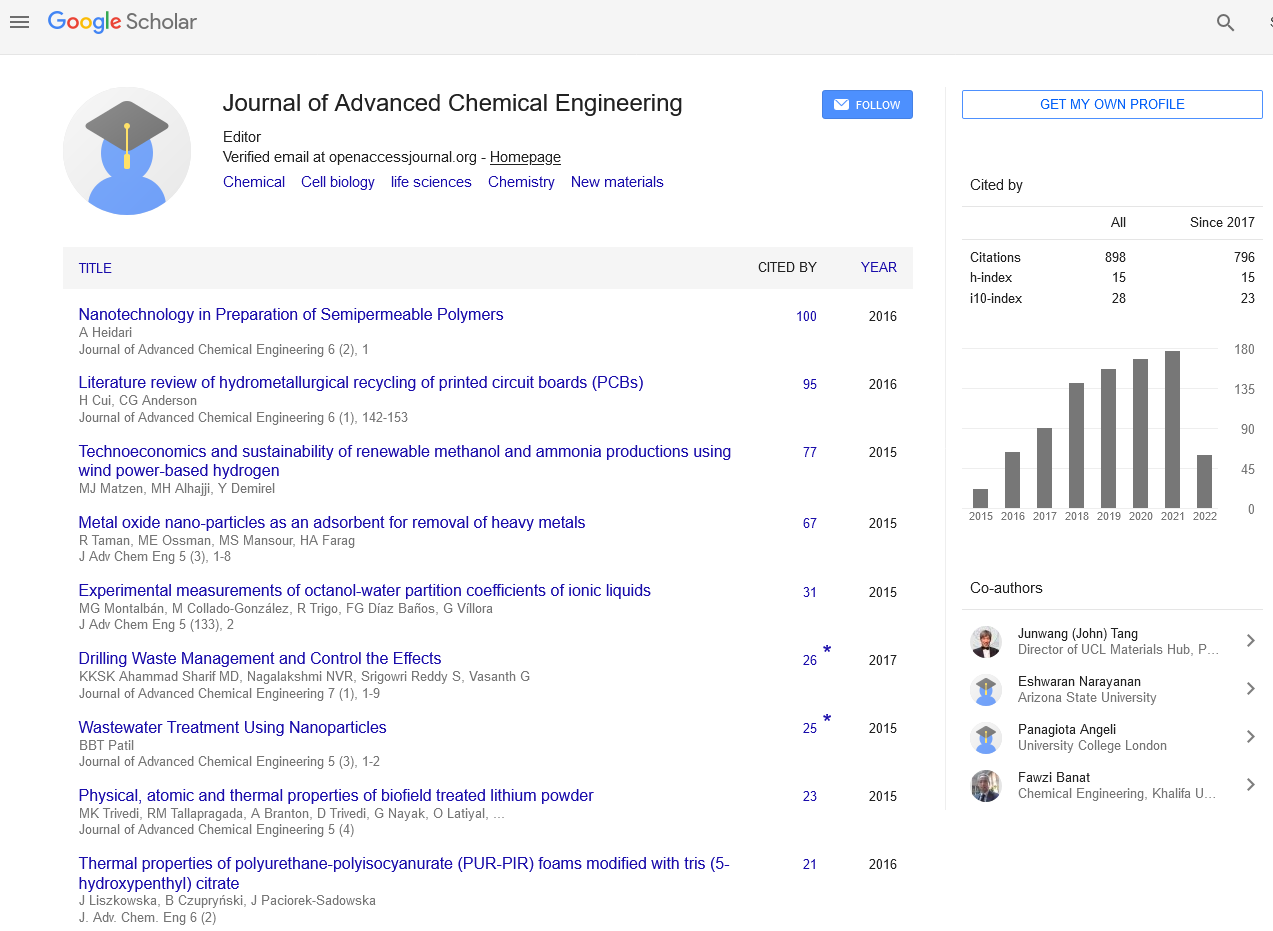Indexed In
- Open J Gate
- Genamics JournalSeek
- Smithers Rapra
- RefSeek
- Directory of Research Journal Indexing (DRJI)
- Hamdard University
- EBSCO A-Z
- OCLC- WorldCat
- Scholarsteer
- Publons
- Geneva Foundation for Medical Education and Research
- Google Scholar
Useful Links
Share This Page
Journal Flyer

Open Access Journals
- Agri and Aquaculture
- Biochemistry
- Bioinformatics & Systems Biology
- Business & Management
- Chemistry
- Clinical Sciences
- Engineering
- Food & Nutrition
- General Science
- Genetics & Molecular Biology
- Immunology & Microbiology
- Medical Sciences
- Neuroscience & Psychology
- Nursing & Health Care
- Pharmaceutical Sciences
Abstract
A Bioleaching Regeneration and Recovery of Spent Refinery Catalyst Using Adapted Microorganisms
Olalere Olusegun Abayomi, Olunusi Samuel Olugbenga, Agboola John Olatunji, Mohamed Farag Twibi and Saber Abdulhamid Alftessi
The regeneration of spent catalyst is either through chemical leaching or bioleaching techniques; with the latter being an alternative to the traditional extraction methods involving the use of series of adapted microorganisms. The bioleaching process is therefore the best alternative due to cost effectiveness, simple in operation and higher recovery of heavy metals. This research work adapted various microorganisms (three bacteria and one fungus) both singly and in mixture into a digested solution of a spent refinery catalyst. The activity order of the adapted microorganisms was described in this order; Pseudomonas flourescens>Bacillus coagulans>Bacillus megaterium or Pseudomonas putida>Fusarium flocciferum. The Pb-ion showed a greater resistance to bioleaching while Mn ion was easily bioleached by the adapted microorganisms. From the results obtained, the affinity of some of these cultured microorganism strains to the heavy metals was attained with Fusarium flocciferum showing affinity for Mn only, Bacillus megaterium or Pseudomonas putida for Mn and Cd-ions, Bacillus coagulans for Pb and partially for Ni- ion, while Pseudomonas flourescens for Pb and Cd-ions. Hence the adaptation of various microorganisms into a digested solution of a spent refinery catalyst already poisoned with the heavy metals is explicitly carried out to regenerate the catalyst for a possible reuse which is optimal in saving the cost of production.


